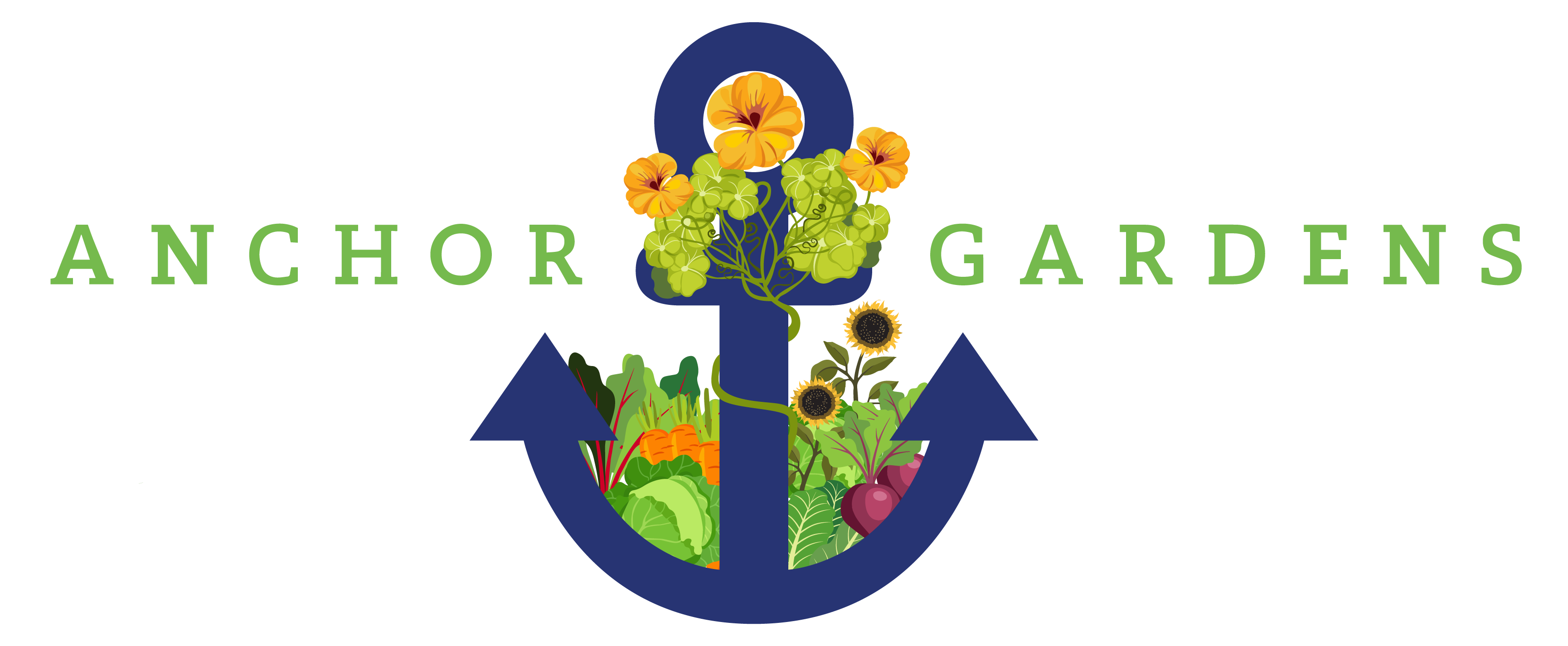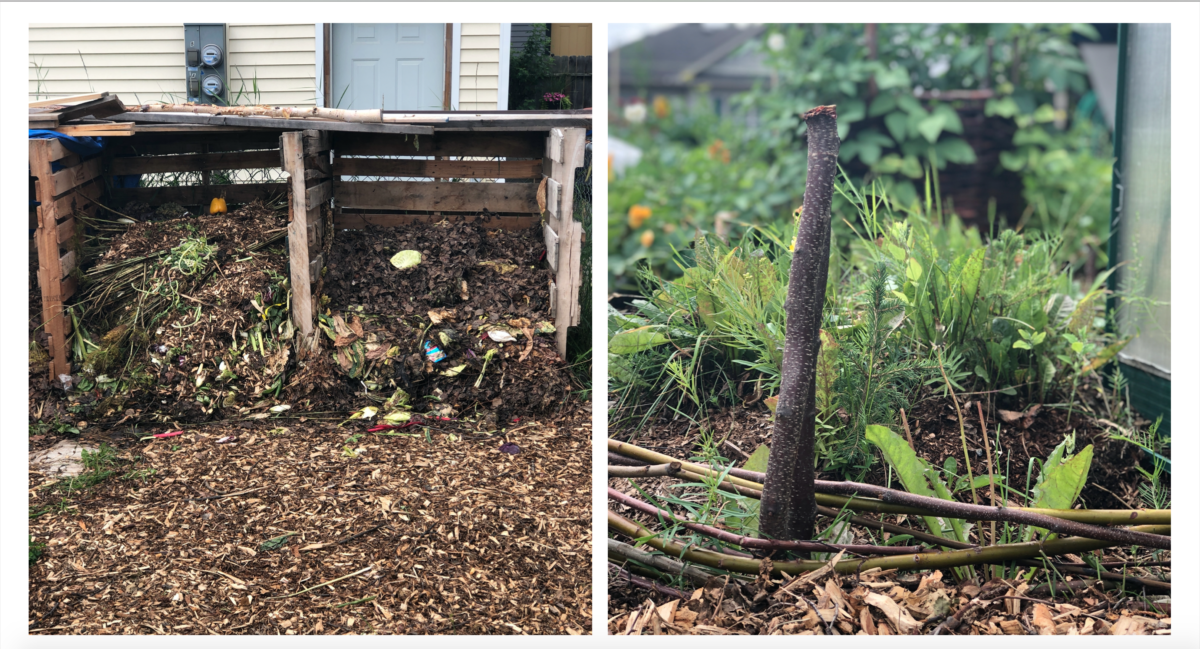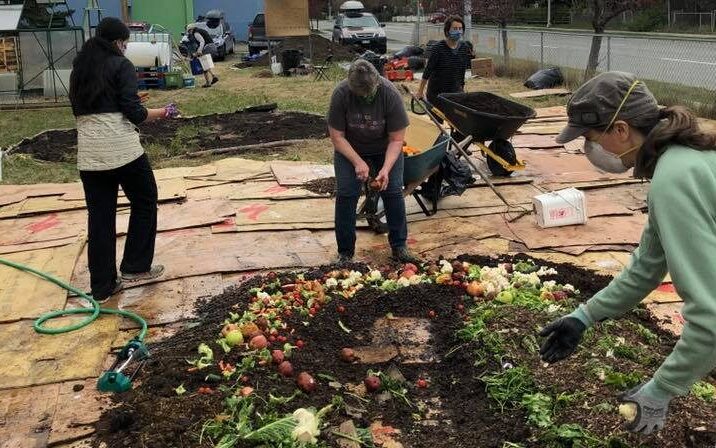Learning to grow your own food is important in today’s economy
The Anchor Gardens organization was created due to the COVID-19 shipping disruptions. Our founders realized that when our supply chain is disrupted, shelves go empty and people go hungry. Only 5% of the food Alaskans consume is produced in the state, everything else we eat is shipped in from out of state or out of country.
The increased occurrence of harsh weather conditions and environmental disasters is causing food shortages and price increases worldwide. These disruptions are caused by severe thunderstorms, wildfires, hurricanes, droughts, flooding and unexpected frost during the growing season. They often damage entire crops that are intended for our local grocery stores. Disease outbreak and pest infestation can also affect availability and increase food prices. Lastly, economic decisions made by all levels of government, union strikes, and FDA food recalls all affect our food supply in Alaska.
Tariffs are Coming
Due to the change in the Federal Government Administration, a federal tariff increase on imports is proposed for 2025. The tariff increase varies from 10% to 60%, depending on what country it is being imported from. The Anchorage Assembly already approved a Port tariff for goods shipped to the Port of Anchorage; to help pay for the Port of Alaska Modernization Program. Consumers who receive goods through the port will see this increase take effect on January 1, 2025. The tariffs will rise from $0.59 per ton to $4.80 per ton. A rate increase of nearly 800%. Read the Port of Anchorage Terminal Tariff and view the annual rate increases. This also made the news: With Port of Alaska tariffs rising, consumers may see slightly higher prices on goods statewide (Alaska News Source) One company, SpanAlaska, has already decided to raise rates by 7.5%. They notified their customers on Nov 15, 2024 of the rate increase, which goes into effect Dec 15, 2024. Bottom line: there’s no way around it, these costs will be passed on and you’ll see it in store’s price tags.
Learn to grow your own food with Anchor Gardens!
Anchor Gardens realizes that the combined increase of tariffs on imported goods, natural disasters and food recalls create a serious food security problem. Together, we can reduce this problem by learning how to grow our own food in our backyards and shared community gardens. Our neighborhood coaches are here to teach the community how to sustainably harvest wild plants, grow cool weather vegetables and fruits. They can teach you how to create a microclimate on your property or use greenhouses to grow the produce that needs a warmer, more humid environment than a typical Alaskan summer provides.
In the table below are common food imports you find in the grocery store, and if they can be grown in Anchorage. Some items can be grown with or without a greenhouse in your backyard or even indoors. Some items, such as wheat and barley, are more difficult for “backyard gardeners” to grow but can be purchased from professional Alaskan farmers.
Common shipped in items but could be grown in Alaska
| Food Item | Outside Garden | Greenhouse/Indoors |
|---|---|---|
| Apples | Yes, Hearty varieties | Yes, but a very large one |
| Asparagus | yes | |
| Barley | yes | |
| Basil | yes | yes |
| Beans | Yes, pole and bush | |
| Beets | yes | |
| Blueberry | yes | |
| Bok choy | Yes, also does well in containers | |
| Broccoli | yes | |
| Brussel Sprouts | yes | |
| Cabbage | yes | |
| Carrots | Yes, also does well in deep containers | |
| Cauliflower | yes | |
| Celery | Yes, also does well in containers | |
| Chard | yes | |
| Cherries | Yes, hearty varieties | |
| Chives | Yes, also does well in containers. And is perennial. | yes |
| Collard Greens | yes | |
| Corn | Yes | |
| Cucumber | yes | |
| Currents | Yes | |
| Kale | yes | |
| Lavender | yes | yes |
| Leeks | yes | |
| Lemon Balm | yes | yes |
| Lettuce- Iceberg | Yes, also does well in small containers | |
| Lettuce- Romaine | Yes, also does well in small containers | yes |
| Mint | yes | yes |
| Onions | yes | |
| Pears | Yes, Hearty varieties | Yes, but a very large one |
| Peas | Yes | |
| Peppers | no | yes |
| Potatoes | Yes, also does well in large containers | |
| Pumpkin | yes | |
| Radish | Yes, also does well in deep containers | |
| Raspberry | Yes! Definitely! | |
| Rhubarb | yes | |
| Rosehips | yes | |
| Rosemary | yes | yes |
| Spinach | Yes, also does well in small containers | Yes |
| Strawberries | Yes | |
| Tomato | Yes, if siberian variety or in a warmer microclimate on your property | Yes, with lots of varieties to choose from. |
| Turnips | yes | |
| Winter squashes | yes | |
| Yarrow | yes | yes |
| Zucchini | Yes, also does well in large containers |
Learn more about what is currently grown in Alaska and its seasonal availability at Alaskan Grown.
Anchorage is mostly USDA Hardiness zones 4 and 5 with Girdwood now a Zone 6, which means there’s just some things that need a warmer and more humid or drier climate that Alaska just can’t provide. Therefore, they’d still be an import to Alaska:
- Bananas (Guatemala, Ecuador, Costa Rica, Colombia, and Honduras)
- Oranges (South Korea, Lower 48)
- Mandarin Oranges (Lower 48)
- Lemons (Lower 48)
- Limes (Lower 48)
- Coffee (Hawaii but mostly multiple warmer climate countries)
- Cocoa (Hawaii but mostly multiple warmer climate countries)
- Vanilla Bean (Mexico, Tahiti, Madagascar)
- Avocados (Mexico)
- Nuts (Lower 48 and other countries)
- Olives (Other Countries)
- Grapes (Lower 48)
- Mango (Asian countries, Mexico)
Buy Alaskan
We can also challenge ourselves to eat Alaskan. Buy Delta Barley instead of oatmeal or other cereals at the store; sign up for a CSA from a local farmer; or shop at the farmers markets first before going to the store to buy imports. All of these purchases will naturally increase demand from local farmers so that they can expand their production. If every Alaskan just spent $5.00 a week on Alaskan products it would seriously impact our economy. “If every Alaskan were to take this challenge it would put tens of millions of dollars back into the local economy,” Division of Agriculture Director Arthur Keyes said. So join Anchor Gardens to become more food secure and to grow Alaska’s economy.
If you have questions, want to learn how to garden either in your own space, or plot at a community garden we are here for you and want you to succeed. Join the Anchor Gardens Network and learn more about our growing community.
References:
- 2024 Port of Anchorage Terminal Tariff
- With Port of Alaska tariffs rising, consumers may see slightly higher prices on goods statewide (Alaska News Source)
- How much is grown and produced in Alaska?
- USDA Plan Hardiness Zone Map 2023
- Banana Market, UF/IFAS Extension Publication #FE901
- SpanAlaska General Rate Increase Nov 15, 2024 Notice



